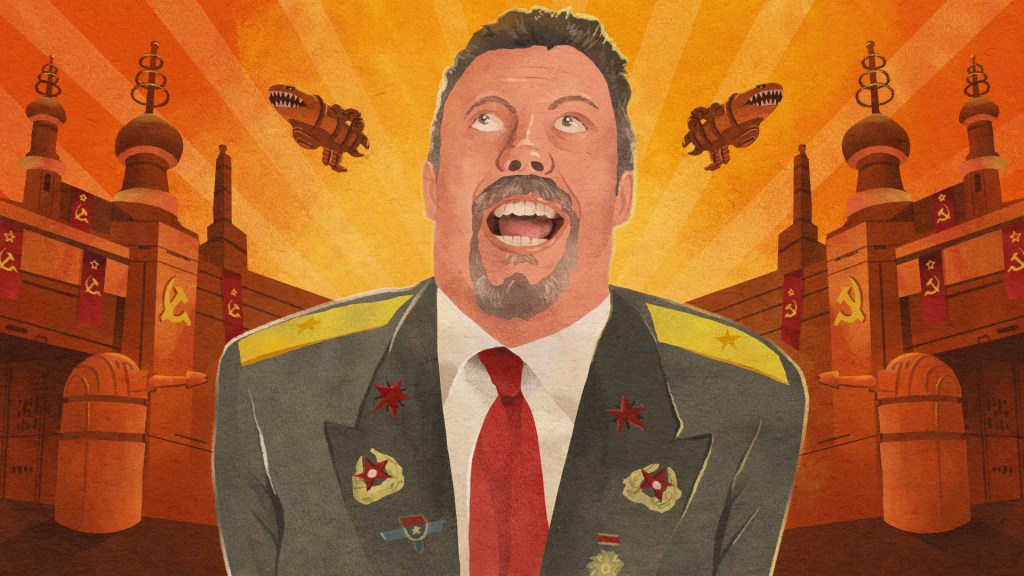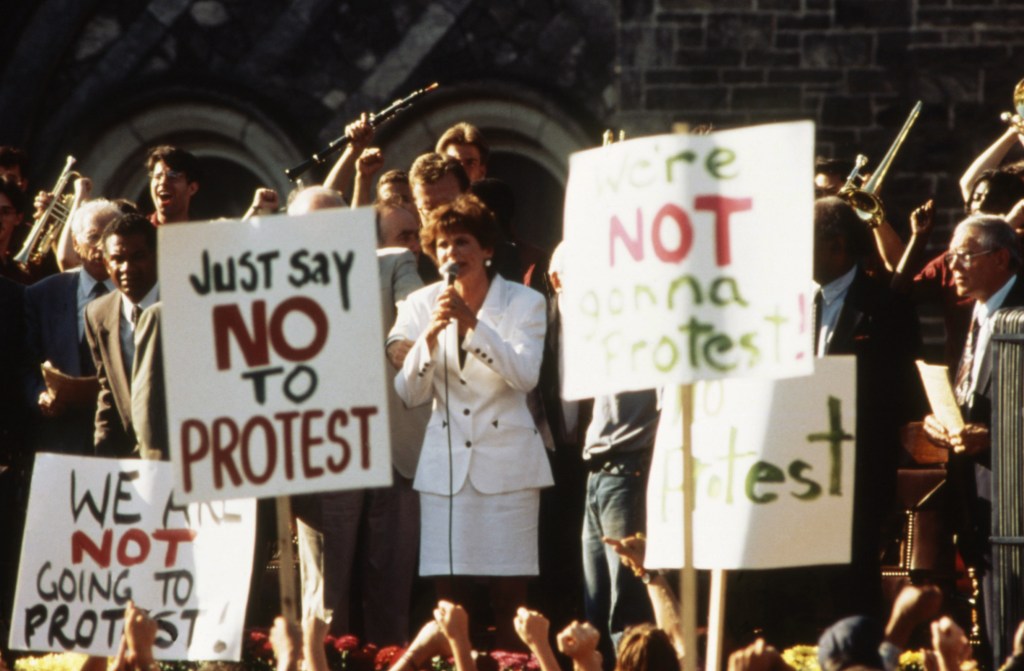Auto racing, and NASCAR in particular, has a reputation of being rather exclusive to a particular white male Southern culture; at its best, it transcends both its perception and its reality, and offers the inclusiveness of everything else that’s both very exciting and very dangerous. Anyone interested in getting into the sport would do well to catch this weekend’s Daytona 500, which is NASCAR’s simultaneous Opening Day and Super Bowl. If that seems like too much work, though, there is always Days Of Thunder.
This is worth mentioning up front: Days Of Thunder is not a good movie at all. That said, it at least has an accessible sense of camp and displays a cursory understanding of auto racing; in addition, Tom Cruise’s teeth have never looked whiter. It is, however, much more interesting as an example of how excess can undermine an entire production, and how a racing movie can become the exception that proves the rule about the inaccessibility of NASCAR. Days Of Thunder is a time capsule of the exact moment of when the 1980’s became the 1990’s, and when people realized they could no longer play by the exact same rules. The exact onset of hangover has never been captured so clearly, loudly, or expensively.
Videos by VICE
Read More: The Terrifying And Hilarious World Of Pace Car Driving
Tom Cruise is Cole Trickle, a hot-shot rookie driver on the blah blah bleugh. Mostly, he is Tom Cruise driving a late-model Chevy Lumina to glory. Trickle is a pretty good amateur open-wheel driver who, like most people who watch too much ESPN, thinks they’re already an expert. Randy Quaid’s Rick Hendrick substitute hires Harry Hogge (Robert Duvall) to build him a car that can win, and maybe mold Trickle into a competent driver and a decent human being if there’s any time left. Not to spoil anything, but there is enough time for one of these things and almost enough time for the other.
Over the course of a year, Trickle morphs from unpolished rookie to Daytona champion, defeating self-doubt and Getting The Girl, who is in this case a racing-skeptical doctor played by Nicole Kidman. What little plot there is to Days Of Thunder is so arch that Roger Ebert himself laid down the ground rules for a Tom Cruise Movie in a qualified positive review for the film. It is to dumb action movies what Joseph Campbell’s Hero’s Journey is to ancient mythology, and, also what Joseph Campbell’s Hero’s Journey is to dumb action movies.
Trickle seduces the good doctor the only way he can, by bribing the head of her hospital into learning her address, and then stuffing her apartment with as many flowers, teddy bears and balloons as possible. This is literally how Weird Al Yankovic wins back Victoria Jackson in UHF, which was released one year before Days Of Thunder. When Robert freakin’ Towne—who wrote fucking Chinatown—rips off UHF, it’s clear just how little those involved really cared about the project.
In a supporting role, John C. Reilly has all the wild-eyed naivety he’d employ to such great effect in Boogie Nights, and also flexes the cursory respect for stock car racing he’d show in Talladega Nights. Here he plays Buck Bretherton—every character’s name seems to have been spit out of a Thomas Pynchon Name Generator into which someone had poured two liters of Mr. Pibb—whose father (spoiler alert) was killed at Daytona the year before due to exhaust-induced hypoxia. Reilly doesn’t get too much to do here in one of his first major roles, other than help Cruise win and foreshadow the surrogate father role taken on by Duvall.
Kidman, for her part, shows America why she was the breakout star of BMX Bandits, in that her Australian accent and, um, determined pre-Oscar acting are on full display. Kidman plays a neurologist, and as a member of the Church Of Neurology, she can easily identify the life-threatening condition afflicting Trickle’s rival racer Rowdy Burns. In a 2010 interview, Michael Rooker claimed that a bunch of 14-year-old girls knew him for his portrayal of Burns, which is a lot better than being recognized by tweens as the star of Henry, Portrait Of A Serial Killer. A similar population of young kids probably did realize who Cary Elwes—who plays the film’s auxiliary backup Trickle rival—was, and presumably wondered why he was being such a dick to everyone else in the movie. To this day, I still do.
Days Of Thunder is a simulacrum of racing culture fit into a standard brainless action movie. While Cole Trickle’s name is an obvious salute to all-time name Dick Trickle, the demeanor of Cruise’s character is not that of an upstart grandpa who would smoke inside the car while in the middle of a race, as the late great Richard Trickle was wont to do. Much of Cole’s narrative is patterned after the career of Tim Richmond, whose illness and death from AIDS in 1989 obviously did not make for a Hollywood ending. (The “30 For 30” on Richmond, To The Limit, is both much more watchable than Days Of Thunder, even given its subject matter, and also does not have anyone named Rowdy in it.)
Telling the story of Days Of Thunder—not of its simplistic plot, but its hilariously star-crossed and coke-muddled production—has become a cottage industry of sorts. A video detailing the making of Days Of Thunder was sold separately from the film itself; that a review of it ended in a “maybe it should be called ‘The UN-Making Of Days Of Thunder’” joke should tell you enough about it. A lot of that making-of’s narrative revolves around how producers Jerry Bruckheimer and Don Simpson (but especially the latter) are indulged in excess after excess, both on screen and off. When you consider that the film’s executive producer, Gerald R. Molen, recently worked on Dinesh D’Souza’s 2016: Obama’s America and America: Imagine The World Without Her, it’s easy to wonder if the excess ever ended.
Even more so than usual for a Tony Scott film, Days Of Thunder‘s cinematography suggests that the film was shot almost exclusively during the magic hour, and while rumors that the crew were getting huge gobs of overtime pay suggest as much, only a mostly deceased handful of people know for sure whether this was a major reason for the film’s world-historic cost overruns. Simpson pretty much inserted himself into the film as a tertiary character, a Mario Andretti-substitute Aldo Bennedetti whose reasons for being onscreen are never exactly clear. Much more of Aldo was supposed to be in the movie, but I can only assume director Tony Scott told his b-unit to “film” Simpson with empty cameras, leaving Simpson’s endless drug-fueled “IT’S-A ME” hem-haw takes to our imagination. (Probably.)
Simpson did partake in all the amenities of a movie star and then some, hence the infamous story of the producers renting a storefront at their hotel as their own private gym, complete with big-ass DAYS OF THUNDER neon sign and the false hope that Daytona natives might catch Tom Cruise work out. It is of little surprise to learn Paramount ended their relationship with Simpson and Bruckheimer soon after box office reality put the high (extremely high, in every sense) expectations for Days Of Thunder into the rail.
Scott tends to get the short shrift in the Days Of Thunder narrative. After Scott took his own life in 2012, this film got some late-in-the-game attention, if not quite a full reappraisal. There was a piece in Slate with a wonderfully insensitive leitmotif contrasting the jets of Top Gun and the cars of Days Of Thunder to the Prius Scott drove on his way to jumping off a bridge. That Slate-iness aside, that essay posited that Days Of Thunder signaled an end to producer-driven blockbusters, the way Michael Cimino’s Heaven’s Gate signaled the end of director-driven 1970’s cinema.
While Scott was indeed hamstrung by both the producers and screenwriter Robert Towne, this does not explain Tony Scott’s non-Simpson/Bruckheimer work, which while containing many respectable cable staples and cult classics, like True Romance and Crimson Tide, still included such over-the-top sports movies as The Last Boy Scout and The Fan. Days Of Thunder might have signaled the temporary end of producer-driven excess, but it did not stop Tony Scott from glorifying screenwriter-driven excess, whether it was expressed through Billy Blanks scoring a touchdown by gunning down the opposing secondary, or Robert DeNiro knife-pitching his way to Wesley Snipes’ heart.
Hans Zimmer’s score is one of the best parts of Days Of Thunder, especially its opening theme. The music feels less like putting shine on a turd, although of course it is, than preparing the viewer for a truly spectacular experience. By the time David Coverdale’s favor for Tom Cruise disguised as a closing theme comes in at the end, it’s hard not to feel betrayed. This promising soundtrack lied, leaving us only with minutes of technical credits and the dude from Whitesnake.
Days Of Thunder, ultimately, is less of a thrill ride than a pile-up; if it is watched years from now, it will be as a case study for future mechanics, racers, film producers, and studio chiefs on What Not To Do. The best parts of the movie, by far, are the ones that result from Towne’s own attempts to penetrate the subculture. That input from NASCAR drivers and officials gives us such moments as Hogge and his crew happily eating ice cream in the pit while Trickle needs to stop, which is hardly a classic film moment but also about as close to good as Days Of Thunder gets. What Robert Towne and company couldn’t get out of those in the know, they just stuck a Yugo engine in a Chevy frame, slapped some logos on it, and told it to keep turning left until it heard David Coverdale singing.



